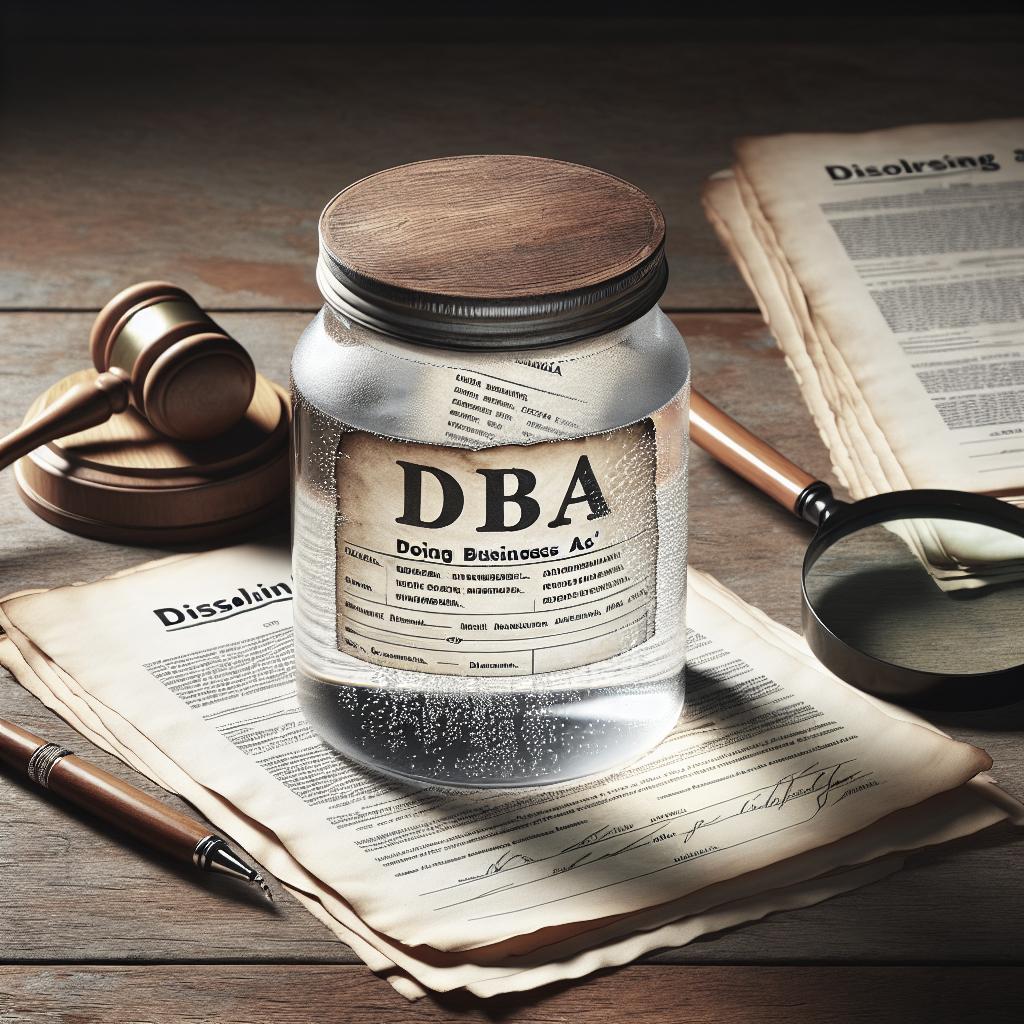<>
“`
How to Dissolve a DBA: A Comprehensive Guide
Starting a business can be an exciting journey, but sometimes it becomes necessary to dissolve a DBA (Doing Business As). Whether it’s due to rebranding, shifting focus, or closing down operations, dissolving your DBA requires careful attention to details. This blog post will guide you through the essential steps, from initial considerations and legal requirements to closing actions specific to your business structure. Additionally, we will address common queries in our FAQ section and provide a detailed knowledge base to facilitate a smooth dissolution process.
Frequently Asked Questions
When it comes to dissolving a DBA, there are often many questions. Here we answer some of the most frequently asked ones to help you understand the process better. 1. What is a DBA? A DBA, or “Doing Business As,” is a business name that is different from your personal name, the names of your partners, or your corporation’s name. It’s necessary to register a DBA in order to legally operate under a trade name. 2. Why would I need to dissolve my DBA? Common reasons include rebranding, business closure, or legal requirements. Sometimes businesses choose to operate under a different name or stop operations altogether. 3. Is dissolving a DBA a complex process? While not exceedingly complicated, dissolving a DBA involves certain legal steps and filings to ensure compliance with state and local regulations.
Closing Actions & Documents by Business Structure
Sole Proprietorship
For sole proprietors, dissolving a DBA is generally straightforward. Here are the steps involved: 1. Notify Your State and Local Authorities: The first step is to inform the state and local authorities. Some states require a formal “Discontinuance of Business” form to be filed with the same office where the DBA was originally registered. 2. Close Financial Accounts: If you have bank accounts or credit lines opened under your DBA, it is important to close them officially to prevent future liabilities. 3. Notify Creditors and Customers: Make sure to inform creditors, clients, and customers of your intention to close the business. This reduces future legal complications and keeps your business reputation intact.
Partnership
Partnerships need a bit more formal paperwork compared to sole proprietorships. The following steps outline what needs to be done: 1. Legal Filings: Similar to a sole proprietorship, it is crucial to file a “Discontinuance of Business” form with state and local authorities. Depending on your state, there might be additional documents required, such as partnership dissolution forms. 2. Settlement of Accounts: Close financial accounts and settle any pending debts or receivables. Ensure that all partners agree on the closure and the division of any remaining assets. 3. Public Notification: In some states, a public notice in a local newspaper may be required to formally announce the dissolution of the partnership. Make sure to check with local guidelines to comply.
Corporation and LLC
For corporations and LLCs, the dissolution process involves additional steps: 1. Board Resolution: First, a formal resolution to dissolve the DBA must be passed by the board of directors or members of the LLC. This resolution should be documented in the meeting minutes. 2. Legal Filings and Compliance: File the necessary forms, which may include Articles of Dissolution and Notifications to the Secretary of State. Ensure compliance with state regulations. 3. Settling Debts and Distributions: Close all accounts and settle outstanding debts. Distribute remaining assets to shareholders or members according to the bylaws or operating agreement.
Knowledge Base
Understanding the nuances of dissolving a DBA is critical. Here is a detailed knowledge base to help you navigate the process effectively: – Legal Implications: Failing to dissolve your DBA properly can result in legal complications. Unnecessary tax filings, liabilities, and even lawsuits can arise from incomplete dissolution. – Tax Considerations: Ensure that you file the final tax returns and pay off any outstanding tax obligations before dissolving your DBA. Consult with a tax advisor to avoid potential penalties.
Knowledge Base
– Record Keeping: Maintain all dissolution documents for at least seven years. These records can be indispensable for audits, legal inquiries, or future business endeavors. – Professional Advice: Consider seeking professional help if you are unsure about any part of the dissolution process. Lawyers and accountants can provide valuable insights and help ensure compliance. The process of dissolving a DBA might seem daunting, but with careful planning and attention to detail, it can be managed smoothly. Keep informed, follow necessary legal steps, and don’t hesitate to seek professional help when needed.
Summary of Main Points
| Content | Details |
|---|---|
| Frequently Asked Questions | Explains what a DBA is, why you might dissolve it, and the complexity of the process |
| Sole Proprietorship Closing Actions | Steps to notify authorities, close financial accounts, and inform creditors and customers |
| Partnership Closing Actions | Filing forms, settling accounts, and public notification |
| Corporation and LLC Closing Actions | Board resolution, legal filings, and debt settlement |
| Legal Implications | Consequences of improper DBA dissolution |
| Tax Considerations | Final tax filings and obligations |
| Record Keeping | Importance of maintaining dissolution records |
| Professional Advice | Benefits of seeking legal and accounting assistance |
“`
